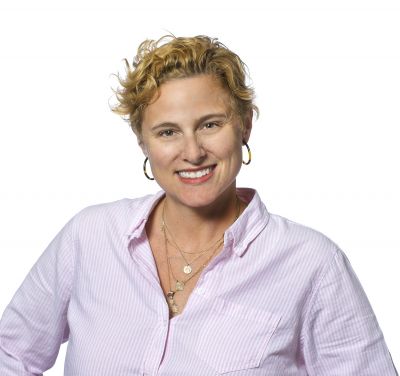Recently, we’ve been getting questions about how to control the lead volume and help balance out marketing spend vs. new home inventory. We thought this would make an excellent blog as well as a handy Homefiniti and Beyond topic, so we went forward with trying to bring it to you live on Friday, May 14th. However, my internet had other ideas and decided that mid broadcast would be a great time to cease functioning entirely.
Thus the season finale of Homefiniti and Beyond is coming to you in the form of a blog post. All evidence of the ill fated episode has been erased thanks to my trusty cohost, Megan. But seriously, this is a super interesting topic and one I am excited to dig into.
Trimming your budget to reflect your limited inventory and lead overflow can be overwhelming. The good news is that armed with a few stats from your CRM and your marketing team, you can find a “magic” number that can serve as the starting point for just how much you want to trim. The bad news is that it involves a not insignificant amount of math.
CLEAN HOUSE
First things first, your lead volume is probably at a fever pitch right now and might be a bit of a disorganized mess in your CRM. Our biggest piece of advice is to go through and edit out any less than stellar leads that may have wormed their way in through some automated format. Next up, assign them to the appropriate salesperson. Doing this will help you gather the information that will be required in the math olympics that follows.
WHAT YOU’LL NEED
Once you’ve got that organized comes the “fun” part. As your marketing team, we need some info from that CRM to distill out the best path forward for lead management and sustainability. We’re going to need the following information:
- Sales Goals for a specific period of time
- Homes sold in 2021
- Total incoming leads in 2021 (in person, online and via any other avenue)
- Appointments set from incoming leads in 2021
Your trusty marketing team can take it from there. We’ll supply the following information
- Total online leads in 2021
- Breakdown of leads attributed towards specific paid media channels in 2021 such as Facebook and Google
- The amount of users sent to your website from paid media channels
- The amount spent on paid media channels in 2021
- The cost per click on Paid Media
With these numbers we will distill out important information that will lay out some basic information and trends. First we will find out the appointment conversion rate by dividing the homes sold by appointments set. Next we will find the lead conversion rate by dividing the appointments set by the total incoming leads. Working our way further out we will then calculate the percentage of leads attributed to online paid media channels. The last conversion rate we need is that of the paid media channels. We’ll divide leads by users for that. Finally we will get a cost for paid media leads by dividing the amount spent by the leads attributed to the channel.
SAMPLE
This is all the background math you will need to be able calculate what your future spend should be. Are you still following me? I’ll give you a pretend scenario below.
- Goal = 100 homes
- Homes Sold = 500
- Appointments set = 2,500
- Leads total = 12,500
- Facebook Leads =1,250
- Facebook Users = 250,000
- Facebook Spend = $75,000
- Google Leads =1,875
- Google Users = 125,000
- Google Spend = $187,500
- Percent of Leads from Facebook = 1,250/12,500 = 10%
- Facebook Conversion Rate = 1,250/ 250,000 = .5%
- Facebook Cost Per Click = 75,000/250,000 = $.30
- Facebook Cost Per Lead = 75,000/1,250 = $60
- Percent of Leads from Google = 1,875/12,500 = 15%
- Google Conversion Rate = 1,875/12,500 = 1.5%
- Google Cost Per Click = 187,500/ 125,000 = $1.5
- Google Cost Per Lead = 187,500/1,875 = $100
HOW TO CALCULATE MEDIA SPEND
So much math it makes my head hurt just a little. But then it makes my head so very happy because this is where the magic happens. In the example above, the home builder wants to sell an additional 100 homes. We know only 20% of appointments will turn into sales so we need to set 500 appointments. We also know that 20% of leads turn into appointments so that means we need 2,500 leads. From those leads 10% are attributable to Facebook and 15% to Google. That means we need 250 leads from Facebook and 375 from Google. Thusly, (that’s such an oft underused word and it’s so good, better even than oft) based on the .5% conversion rate on Facebook and the 1.5% conversion rate on Google we need 50,000 Facebook users and 25,000 Google users. To get said users we will need to spend $15,000 on Facebook and $37,500 on Google.
The other way to get there is to multiply the cost per lead by the number of leads needed for each channel. But if I just went straight to that I couldn’t flex my big math 🧠 for you and where’s the fun in that? 😂
BUT WAIT THERE’S MORE
If you are still here reading this, kudos! Because here’s where we leave the math behind and get into a conversation about the effect of budget trimming on organic and direct website traffic. My favorite phrase in life and in marketing is “a rising tide lifts all boats”. In marketing, it means that when you increase traffic from one source, it generally leads to increases across a multitude of sources. Spend more on Facebook, get more traffic via organic search. Get free press for that awesome playground you built for your community rec center, see an increase in direct traffic to your website.
But the opposite is also true. Spend less on paid media, get less organic traffic. The truth of the matter is that MOST leads come into your website from organic and direct sources. So you want to be careful how much you adjust down your paid media spend because it will also result in fewer leads from organic and direct traffic. That $15,000 and $37,500 spend it just the beginning of the budget conversion.
This is the part where you take a little bit of your gut and combine it with the hard numbers to distill out how much you’re comfortable trimming. Somewhere between your current spend and those numbers we just got lies the right number. These numbers are averages and they’re based on the craziest couple of months the new home building world has seen in a long while. Also, the rest of the world is coming back to life and buying up ads on Facebook and Google so it’s getting more expensive to get those clicks. We suggest trimming a little at a time over the course of several months.
HOW TO TAILOR YOUR ADS TO HELP THE COMMUNITIES THAT NEED IT
You’ve trimmed your budgets and you’re ready to go, how do you get the most bang for your buck? Use what you’ve got! Take the data in your CRM and use it to create Lookalike audiences on Facebook and help define your targeting on Google. The best way to make the budget go as far as possible is to provide as much insight as possible to Facebook and Google within the confines of fair housing. Send traffic to places on your site that make sense for the audience you’re going after and make it easy for them to contact you.
Pretty cool right? I love my job.
Stay tuned to our Facebook and Instagram pages over the summer because we’re going to be sharing sneak peeks of our new in-office studio! Team ONeil is headed back to the office in June and I’m coming at you live and in person from ONeil headquarters in September with a whole new look and hopefully more team member guests and perhaps even a few client guests! Woop! Woop!



